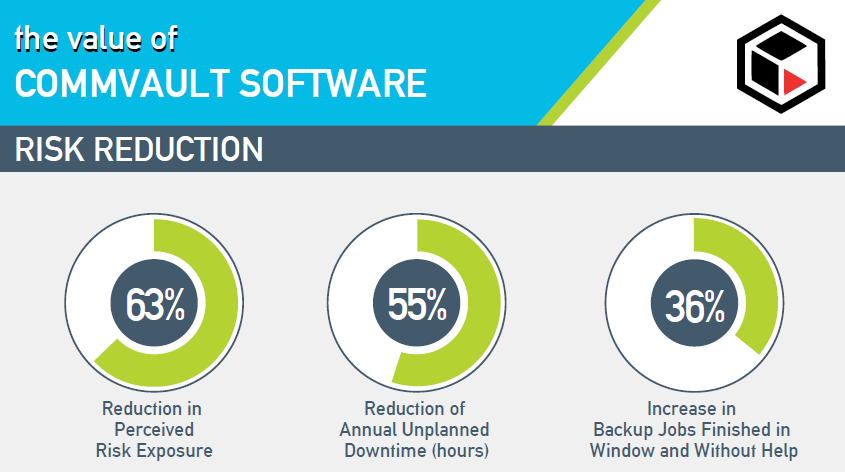Risk Reduction: Why Take Chances with Protecting Vital Data?
The Value of Commvault Software - Part 2

The widespread disruption caused by heavy flooding in recent years here in Ireland is a constant reminder that not all risk is created equal. Some of it, like adverse weather conditions, is outside of our control. But there are many other elements of risk that an organisation’s management can do something about, and then it becomes a question of what level of risk that business is prepared to tolerate.
A survey by the insurance company Zurich found that 53 per cent of SMEs were spending more time on their risk management strategy than before the financial crisis. No doubt some of that developed from a feeling of ‘once bitten’, but from talking to customers there’s definitely a sense that organisations are now more aware of how much they rely on technology in their day-to-day operations.
So, now that data is a valuable asset and not just a by-product of using IT, organisations are now starting to think of how to treat that information in terms of risk. What would happen if access to vital data was suspended for a period of time? How would the organisation cope?
These questions are being asked not just by organisations themselves but increasingly by regulators. Last September, the Central Bank of Ireland called for greater board oversight of IT risk management. Its guidance couldn’t have put the issue any more clearly: “The incidence of cyber-attack and business interruption is on the increase and firms should assume they will be successfully targeted.”
Risk reduction means different things to different people, but in the context of business continuity, a useful working definition should include certainty of protecting important data and the ability to recover in the event of an unplanned interruption to normal operations. Maintaining compliance with the appropriate legal and regulatory obligations is another way to minimise risk.
This is where data management software can help. In technology terms, we trust our systems to deliver what they promise. We need to know that our data is protected, that we can recover appropriately, in an acceptable timeframe with speed, consistency and granularity. Commvault’s software enables that level of granularity, control and recoverability. And that helps reduce the risk.
As we outlined in last week’s blog post, IDC surveyed Commvault’s global customer base to identify benefits that can be achieved using the company’s technology, and produced an infographic that specifically focuses on risk reduction.
Companies using Commvault reported a 63% reduction in perceived exposure to risk. They also cut their annual unplanned downtime hours by more than half (55%). The organisations also said they increased the number of backups completed within the allocated window of time by more than one third (36%).
(As before, it’s important to stress that the findings don’t include any responses from Irish companies, so the findings aren’t based on the specific risk appetite or profile of organisations on this island. Having said that, the survey results reflect some of the trends we’re seeing on the ground.)
The companies in the survey also reduced their average time to recover for their mission-critical applications, and saw significant fall-off in the chances of suffering theft or breach of data, and of failing a compliance check or audit.
We mentioned earlier about our increasing reliance on technology: in fact, some of our Commvault customers in Ireland could restore data from 15 years ago if they needed to. Businesses are always looking to replace risk with certainty as much as possible, that’s the kind of assurance any organisation would want to rely on.
